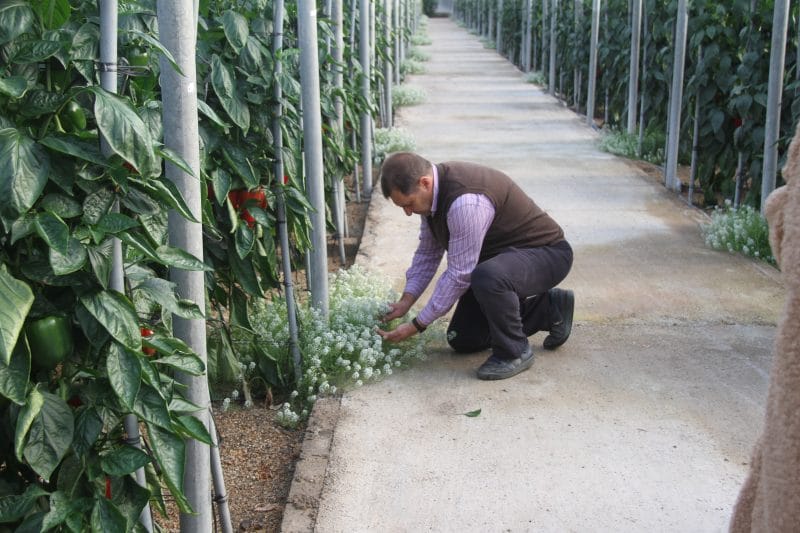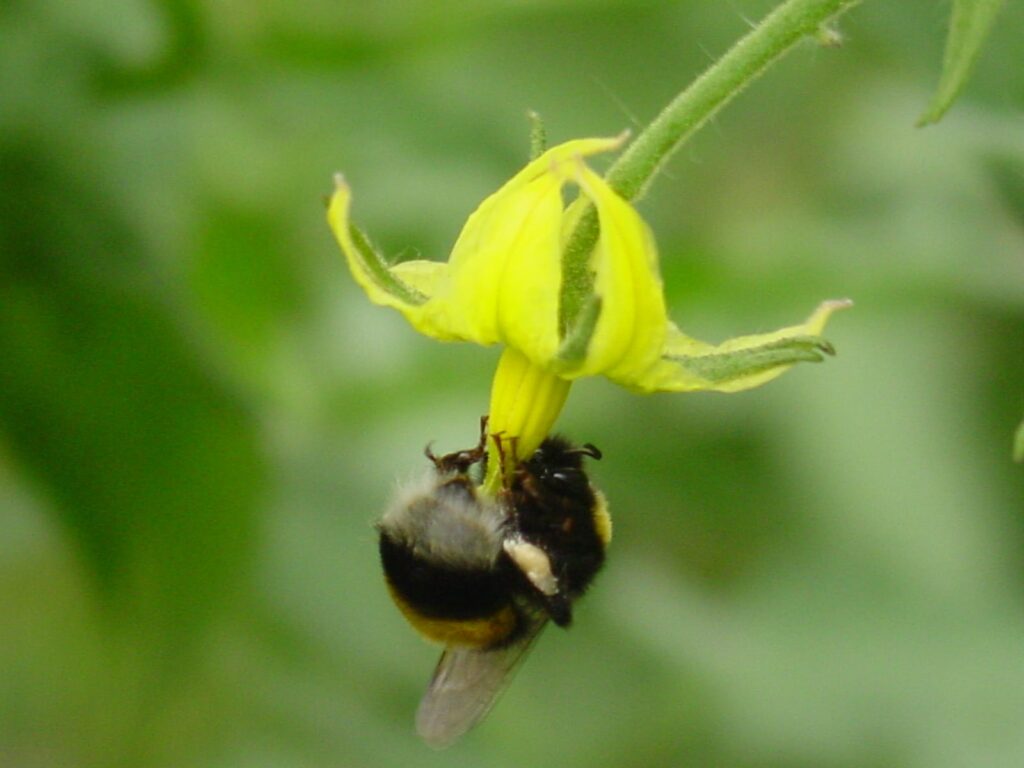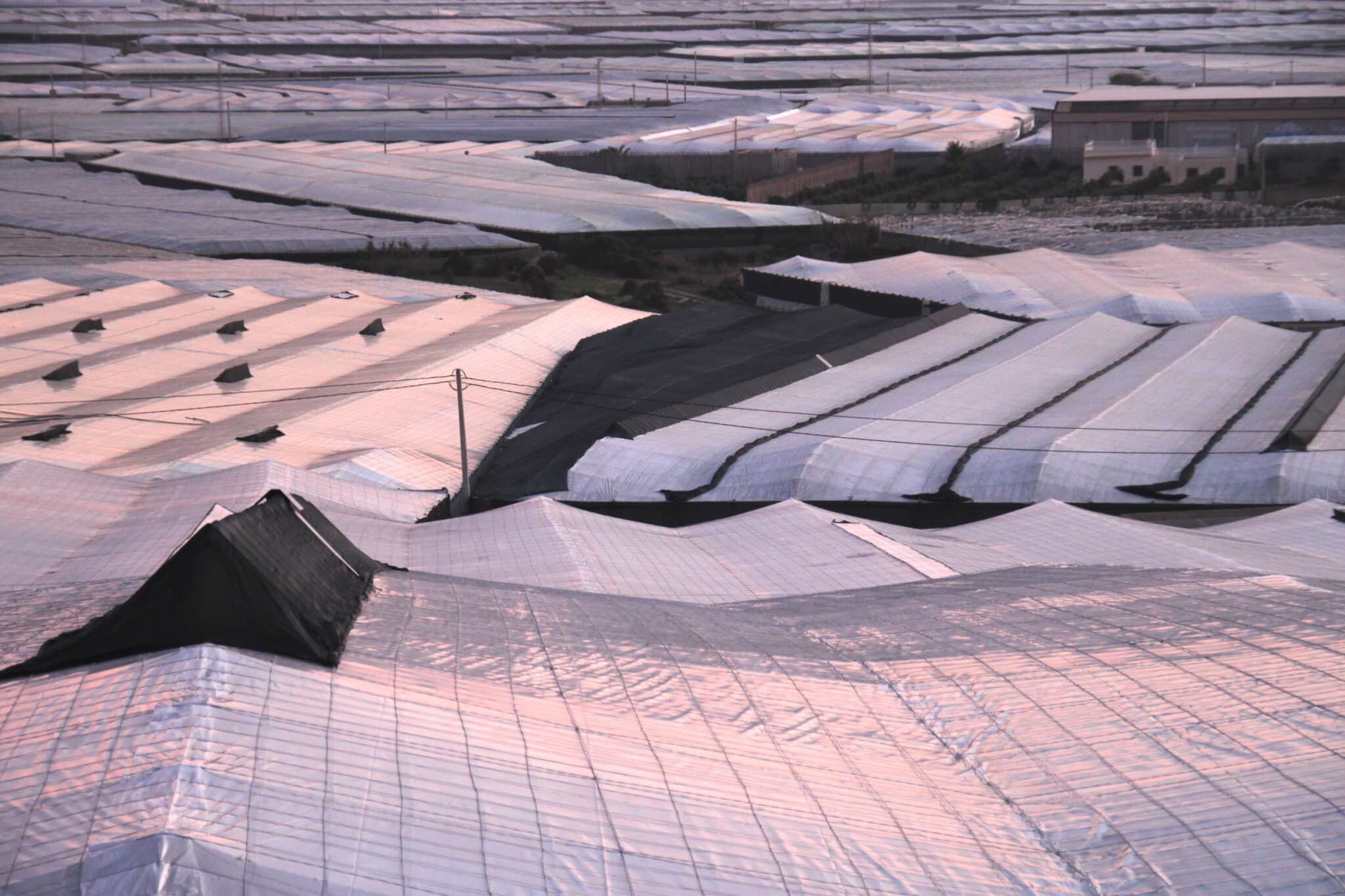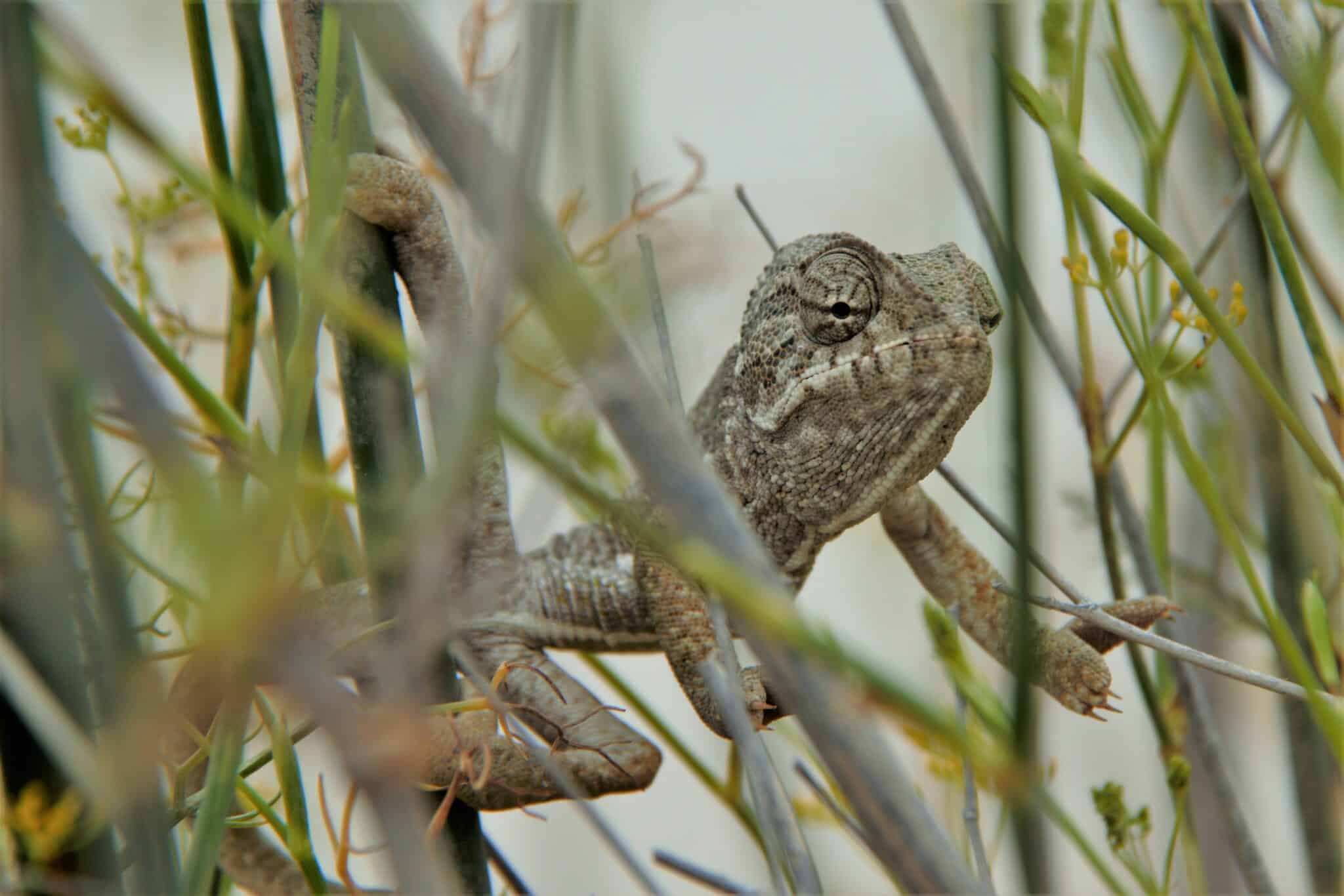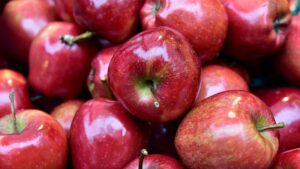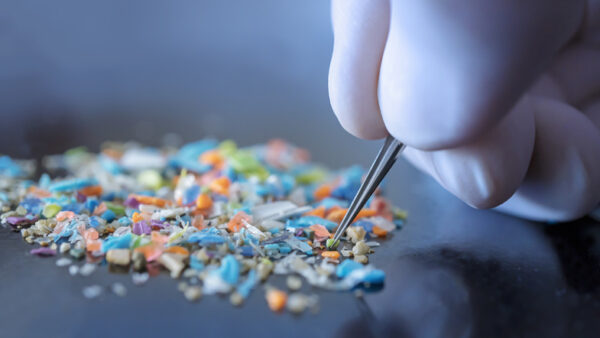Protected horticulture is a highly profitable farming system, offering a major turnover per hectare and providing work for hundreds of thousands of people. Under plastic, crops produce yields that can never be reached in open air. Furthermore, the use of water and fertilizers can be optimised, and the greenhouse cover isolates the crop from insect and mite pests. Nevertheless, intensive horticulture suffers from a bad image with respect to environmental issues, frequently accused of contaminating and abusing water reserves.
Highly profitable agricultural system
The economic importance of protected horticulture becomes clear by observing the figures of the province of Almeria, Spain, where over 60% of the Spanish horticultural greenhouses are concentrated. Approximately 31,000 ha. are owned by 15,000 growers, organized in cooperatives and auctions that export over 70% of the harvest. This makes Almeria the most important supplier of greenhouse vegetables in Europe. Together, the growers account directly for 13% of the gross domestic product (GDP) of the province. The contribution of the total horticultural sector, including the supplying and commercializing industry, ascends to 40% of the GP of Almeria. This is an impressive figure, considering that this agricultural system only covers 3.4% of the provincial territory, permitting a major part of the province to be respected as, mostly protected, natural areas.
Sustainability
In most Mediterranean countries, the greenhouse industry is still young and has grown quickly after the first plastic-houses were constructed in the last decades of the 20thcentury. In many places, this expansion initially occurred in an erratic way, neglecting basic environmental values in arid and sparsely populated landscapes. However, the enormous success of the sector, combined with the fact that little economical alternatives for the population are available, has led to the awareness that intensive horticulture needs to be safeguarded for the future. At the same time, there has been an increased appreciation of the ecological richness of the landscapes where this sector has mainly developed: coastal areas, with the most suitable microclimate for horticulture, but also with a unique flora and fauna, providing a vital role for bird migration.
The technical sustainability of agricultural systems depends on the minimal use of basic resources, such as fossil energy, water, fertilizers and pesticides, as well as on the complete recycling of residues. In order to guarantee a long-term survival of the sector, a continuous effort is required to optimise each one of these factors. Below, a summarised overview is presented with respect to some of these key factors in horticulture.
[tweetshare tweet=”The technical sustainability of agricultural systems depends on the minimal use of basic resources, such as fossil energy, water, fertilizers and pesticides, as well as on the complete recycling of residues.” username=”EuropeanSeed”]
Fossil energy
Mediterranean plastic-houses are generally constructed in areas with a maximum of solar radiation and favourable temperatures, allowing year-round production of crops, like tomato, sweet pepper or cucumber, exclusively heated by the sun. In Almeria, less than 5% of the greenhouses dispose of any additional heating system. Thus, the use of fossil energy for the production is negligible. Even when the energy needed for transport is taken into account, the total energy requirements for the production and delivery of vegetables from Southern Spain to Central Europe is far lower compared to the energy needs for products from other important greenhouse areas, where continuous artificial heating of the crops is indispensable.
[tweetshare tweet=”Including the energy for transport, the total energy for production & delivery of vegetables from South Spain to Central Europe is lower compared to energy needs from other important greenhouse areas, with continuous artificial heating. ” username=”EuropeanSeed”]
Very likely, there will be a gradual increase in the application of artificial heating in greenhouses in the South of Spain. This may be perfectly in line with sustainability, since it will allow the optimisation of other basic resources, for instance to significantly increase the harvest at low temperatures or to avoid fungal diseases due to excessive humidity. At present, an increasing percentage of greenhouses with heating belong to highly technical companies, usually heating with natural gas during the day, taking advantage of the combustion gases (CO2) to enrich the environment for plant growth in well isolated structures. Especially these companies have clear commitments to limit the use of fossil energy and seriously search for alternative sources, such as biofuel or new applications of solar energy.
Water and fertiliser use
Greenhouse horticulture is situated in the most arid regions of Europe, making it necessary to extract as little water as possible from the available aquifers. In general, the profitability of water, i.e. the obtained yield per m3of irrigation water, is far higher in greenhouses than in other agricultural crops. All greenhouses have drip irrigation, and over 80% of the crops grow in a soil covered by a thick layer of sand, where the water immediately penetrates to the rooting zone. Under plastic, evaporation is much more limited than in open air. Water used for irrigation is measured, so the amount and concentrations of fertilizers can also be properly dosed.
Despite the advantages offered by irrigation systems in greenhouses, there is a clear challenge to optimise water and fertiliser use. Observing the general practices of the growers in Almeria, it can be estimated that, approximately, 30-35% of water might be spared by introducing modern equipment and measuring methods. An important saving can be achieved by the replacement of the simplest, and cheapest drippers by pressure-compensated drippers, to obtain a much more homogeneous distribution of the irrigation. Furthermore, the timing and the volumes of irrigation can be optimised by measuring the needs of the plants. Until some years ago, growers only disposed of mechanical sensors, such as the tension meters, that had to be checked continuously to be useful as a guidance tool. Nowadays, there are more and more electronic devices that enable an adequate measurement of the humidity conditions in the root zone, allowing real time monitoring in computers and mobile phones. Irrigation programmes can be managed at a distance through internet. At present, the percentage of growers using these new techniques, less than 10%, is still small. However, these devices are increasingly user-friendly. The growers that start to use them experience a clear economic benefit, by saving water and fertilizers, and obtaining better crop conditions and, ultimately, higher yields. These direct benefits make that the adoption of optimised irrigation techniques may soon boost to a large scale.
Pest Control, pesticide resistance
Pest management in greenhouse horticulture is more complicated than in most open field crops, due to the micro-climate conditions, which are almost permanently favourable for pests and diseases. Furthermore, most crops are vulnerable to insect-transmitted viruses, causing considerable crop losses. In the past, this has led to an intensive pesticide use and, consequently, to resistance of some pests to all available active ingredients. Finally, excessive chemical treatments, inevitably, gave rise to high concentrations of residues on the harvest, followed by commercial rejection of several Spanish horticultural products on the European market. However, due to the massive adoption of biological control as the basis for Integrated Pest Management (IPM), the problem of pesticide residues on horticultural products from Southern Europe have now been overcome, guaranteed by an extremely strict control at all levels.
In the South of Europe, the first important step towards IPM in greenhouses was the introduction of bumblebees for pollination in tomato crops, around 1995. Natural pollination by bumblebees was so profitable that growers were obliged to adapt their pest control system, making it compatible with these beneficial insects. For the first time, most broad spectrum insecticides were banned, and all treatments were limited to a minimum in order to respect the bumblebee workers. After this change, there have never been any significant residue problems on harvested tomatoes.
[tweetshare tweet=”The introduction of bumblebees for pollination caused a ban on most broad spectrum insecticides.” username=”EuropeanSeed”]
Biological pest control first became important in sweet pepper crops, where the most important pest was thrips, Frankliniella occidentalis. Thrips are responsible for direct damage on the fruit, but, most importantly, for the spread of virus (TSWV) that may devastate entire crops. The low tolerance levels for this pest had led to increasing pesticide use, with little effect because of the complete resistance of the pest against all available insecticides. Biological control of thrips is based on the introduction of predatory mites (Amblyseius spp.) and bugs (Orius laevigatus), complemented with other natural enemies against other pests, as well as with the use of some sufficiently selective pesticides. This was already working for a decade in the glasshouses of Central Europe, when the first large scale application became successful in Murcia-Alicante (S-E- Spain) around the year 2000. Growers in that area experienced a much better pest control, and a significant increase in crop yield, thanks to the natural enemies. In the largest production area in Spain, Almería, large scale adoption was finally achieved in 2007.
The introduction of biological control has had a major influence on the commercialisation of sweet pepper, as becomes clear from the export figures from Spain to Germany. Due to excessive pesticide residues, export dropped over 40% between 2004 and 2007. The implementation of IPM permitted a recovery of the export volume, and a spectacular growth after 2012. After 2007, biological control was gradually also adopted in IPM systems in other crops. As a result of the major change in pest management, products from the greenhouses in SE Spain are now proudly presented, with residue levels that are far below the limits set by the most demanding clients.
Waste management
Horticulture in the province of Almería generates large volumes of residues that should be processed adequately. Logically, in a greenhouse covered landscape, the recycling of plastic residues is calling attention, both by local organizations and by media in the countries of destination for export. Enormous progress was made when the burning of residues was forbidden, and the recollection became compulsory, about 20 years ago. At present, approximately 80% of the plastic is recycled, including all the material used for greenhouse covers. Growers generally replace the cover plastic every four years and get paid for the old plastic since it is a homogeneous residue, perfectly fit for recycling. The remaining 20% of waste, mostly consisting of thin plastic sheets, cans and bottles used for packages, etc., is usually incinerated.
[tweetshare tweet=”In Almeria, approximately 80% of the plastic is recycled, including all the material used for greenhouse covers.” username=”EuropeanSeed”]
The recycling percentage of horticultural plastic is, undoubtedly, far higher than that of urban plastic waste. However, in a concentrated greenhouse area, this can, and should, be improved, since it is perfectly possible to get to a proper separation of different materials and to create the optimal logistics. The growers and their organizations are very much aware of the urgency of this task. As long as there is only a tiny fraction of abandoned plastic dumped in the environment, the image of the region, and its commercial position, will remain extremely vulnerable. However, this requires some new technological solutions, as well as a certain level of discipline among the 15,000 growers and their workers in the region.
Agro-ecological approach
Until a few years ago, the overall concept of horticulture consisted of crops grown in a sterile environment. Before each planting, the greenhouse soil and structure were disinfected; weeds were carefully removed, and the immediate surroundings of the greenhouses were kept free from vegetation out of fear that wild plants might favour the propagation and distribution of pests and diseases. With the introduction of biological control agents, live insects and mites that can be obtained commercially, this concept started to change. Currently, it is recognised that also many spontaneously appearing insects and mites may have a crucial contribution in the control of important pests.
A typical example is the tomato leaf miner Tuta absoluta, that has become resistant against the available insecticides and causes major losses. The most effective natural enemy of T. absoluta is a parasitoid that, until now, cannot be reared commercially. However, this little wasp, Necremnus tutae, appears spontaneously in all crops and can completely control the pest when the conditions are appropriate, as was documented in many cases. These conditions include a minimum use of selected pesticides as well as certain environmental adaptations. Both inside the greenhouses and in the near surroundings, non-crop vegetation is planted, providing shelter and food sources to this and other beneficial fauna.
[tweetshare tweet=”Many growers maintain flowering plants in between the crop lines in their greenhouses, from which parasitoids can ingest nectar or pollen as a necessary source of energy.” username=”EuropeanSeed”]
In practice, many growers maintain flowering plants in between the crop lines, from which parasitoids, like Necremnus tutae, can ingest nectar or pollen as a necessary source of energy. Around the greenhouses, more and more hedgerows of native plants and shrubs are planted, knowing that these will soon harbour a wide range of beneficial arthropod species and act as barrier for pest organisms. Biodiversity is now considered a key element of sustainability, completely functional within the greenhouse horticultural system.
Environmental improvements
The results of environmental improvements start to become visible in the greenhouse surroundings, for instance through the increased presence of birds and reptiles. Immediately next to the horticultural areas, several protected wetlands harbour a rich fauna, and supply breeding ground to some of the rarest aquatic birds of Europe. Many of these species, like gulls, terns and herons, forage in the ponds that are used as water reserves next to each greenhouse. But, perhaps the best indication of the improvements is the presence of insectivorous birds and reptiles immediately in and between the greenhouses. Several species of lizards are now commonly present within the greenhouse crops. Especially well documented is the expansion of the chameleon in Almeria, of which there was always a small isolated population in one specific area of the province. However, this species is now found all along the area and frequently even seen inside the greenhouses.
[tweetshare tweet=”Although there is still a lot to be done, greenhouse horticulture in Southern Spain is well on its way to sustainability.” username=”EuropeanSeed”]
Well on its way…
The greenhouse sector consists of many thousands of independent growers who all have to contribute to make the horticultural system ‘future proof’. They must continuously change their way of thinking and working and adopt new technologies and insights. This is not just a technological process, but also an enormous social challenge. Nevertheless, the sector has demonstrated that it is able to make great steps if necessary. Although there is still a lot to be done, greenhouse horticulture in Southern Spain is well on its way to sustainability.
Editor’s Note: Jan van der Blom is entomologist in the Department of Production Techniques of COEXPHAL in Almeria, Spain
Related Content:
- The Diversity Dynamics of Greenhouse Tomato Varieties: https://european-seed.com/2020/05/the-diversity-dynamics-of-greenhouse-tomato-varieties/
- Changes in Agriculture Could Cut Sector Non-CO2 Greenhouse Gas Emissions by up to 50 Percent: https://european-seed.com/2018/12/changes-in-agriculture-could-cut-sector-non-co2-greenhouse-gas-emissions-by-up-to-50-percent/
- Understanding the Long-Term Impact of Human Actions: https://european-seed.com/2020/09/understanding-the-long-term-impact-of-human-actions/


